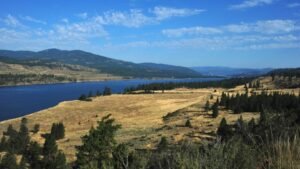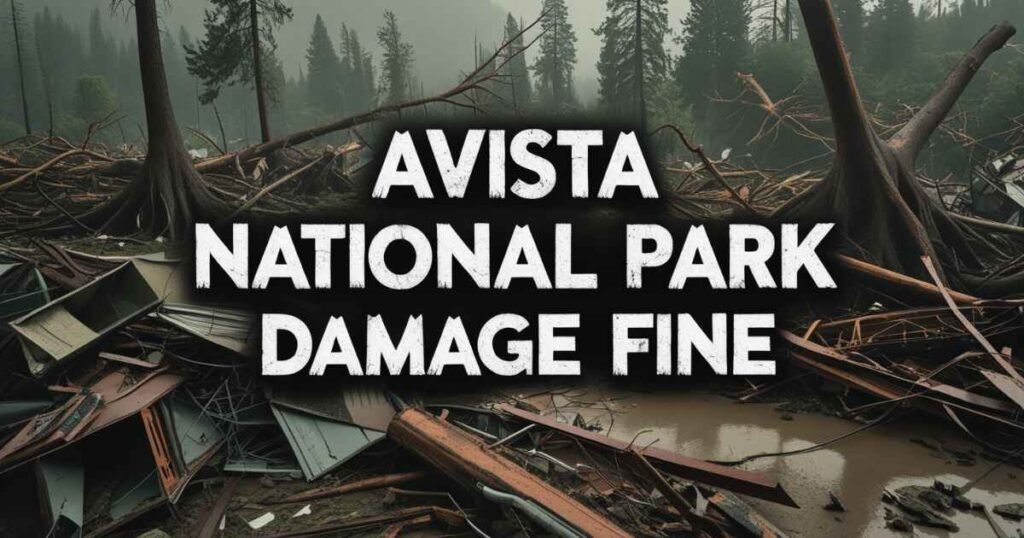What is Avista National Park and What Makes It Unique?
Avista National Park, located in the heart of a diverse mountainous region, is renowned for its stunning geographical features and rich biodiversity. This national park encompasses sprawling landscapes, including rugged mountains, serene lakes, and lush forests, making it a cherished natural resource. The geographical diversity not only creates picturesque vistas but also supports a wide variety of ecosystems, contributing to the park’s ecological significance. Visitors to Avista National Park often marvel at the dramatic topography, which includes towering peaks and gentle valleys that provide a stunning backdrop for outdoor enthusiasts.
The biodiversity found within Avista National Park is remarkable. It serves as a habitat for numerous wildlife species, including mammals, birds, reptiles, and aquatic life, some of which are endemic to the region. The interplay of various plant communities creates a thriving ecosystem that is essential for both wildlife and visitors alike. This ecological richness underscores the importance of protecting the park’s environment against potential threats, such as pollution and over-exploitation.
The park is a popular destination for a range of recreational opportunities, encompassing activities like hiking, camping, birdwatching, and fishing. These activities attract thousands of visitors each year, who seek to enjoy the natural beauty and tranquility the park offers. However, it is crucial to recognize that human activity can significantly impact this delicate ecosystem. Instances of park damage result in a need for robust management strategies, including the implementation of fines for those who contribute to environmental degradation, such as the avista national park damage fine. Thus, educating visitors about their responsibilities in preserving the park’s integrity is vital for its continued enjoyment and conservation.
Avista National Park stands as a testament to nature’s splendor and a reminder of the necessity to protect such treasured resources for future generations.
Causes of Damage Within Avista National Park
Avista National Park, renowned for its stunning natural beauty and diverse ecosystems, faces significant challenges from various factors that contribute to environmental damage. One of the most concerning causes is illegal activities, such as vandalism and unauthorized off-trail hiking. These actions not only mar the aesthetic value of the park but also disrupt the delicate balance of its ecosystems. For example, spray painting on rock formations, carving into trees, and leaving behind litter can have long-lasting effects on the natural landscape and the wildlife that inhabit it.
In addition to illegal activities, environmental degradation poses a serious threat to Avista National Park. This degradation often stems from human actions, such as pollution and resource overexploitation. Littering, for instance, is a pervasive issue that detracts from the park’s natural charm while negatively impacting flora and fauna. The accumulation of trash can lead to contamination of soil and water sources, resulting in health risks for both wildlife and park visitors. A particular concern is the effect of plastic waste, which has been found to persist in the environment for decades, contributing significantly to the ecosystem’s decline.
Another factor contributing to damage within the park is the overuse of park trails, primarily due to increased visitor numbers. While promoting tourism is essential for the park’s economy, heavy foot traffic can cause soil compaction and vegetation loss along trails. This not only diminishes the visual appeal of these areas but can also result in soil erosion, leading to further habitat destruction. Observations and reports from park management indicate that these damages are prevalent and have detrimental effects on wildlife species and their habitats. As a result, finding a balance between preserving natural resources and accommodating visitors is crucial for the sustainability of Avista National Park.
Understanding the Avista National Park Damage Fine System
Avista National Park, like many protected areas, has established a comprehensive damage fine system to ensure the preservation and sustainable management of its natural resources. This system is crucial for maintaining the park’s integrity and enforcing regulations that govern visitor behavior. Fines are typically assessed based on the severity of the damage caused, the extent of the violation, and specific guidelines outlined in the park’s regulations.
Park authorities have the responsibility of monitoring activities within Avista National Park to identify any infractions. This includes regular patrols and the use of surveillance techniques to ensure compliance with established rules. When damage is observed, officials document the incident and gather pertinent evidence that will facilitate the assessment of an appropriate fine. The fine may vary significantly based on factors such as the type of damage inflicted—whether to flora, fauna, or park facilities—and the context in which this damage occurred.
The legal framework surrounding the assessment and enforcement of Avista National Park damage fines is grounded in both federal and state regulations that protect public lands. Violators can face penalties ranging from monetary fines to more severe consequences, such as prohibition from future entry into the park or even criminal charges in extreme cases. It is essential for visitors to understand that failing to comply with park regulations not only affects their personal accountability but also jeopardizes the park’s ecological balance and visitor enjoyment for others.
In conclusion, understanding the Avista National Park damage fine system is integral for all visitors. Awareness of these regulations fosters a culture of respect for nature and ensures that Avista National Park remains a protected sanctuary for future generations. Maintaining the park’s integrity relies upon each visitor’s commitment to comply with established rules and guidelines.

How You Can Help Prevent Damage and Support Avista National Park
Preserving the ecological integrity of Avista National Park is a shared responsibility among visitors, locals, and environmental enthusiasts alike. By adopting responsible tourism practices and engaging with the park’s conservation efforts, individuals can make significant contributions to protecting this natural treasure. One of the most effective ways to prevent damage is by adhering to established park guidelines. These regulations are in place to minimize human impact on the environment, ensuring that natural habitats and wildlife can thrive. Visitors should stay on designated trails, avoid littering, and refrain from disturbing flora and fauna. Such actions not only limit avista national park damage fine risks but also enhance the overall visitor experience.
Participating in volunteer programs is another impactful avenue for support. Many organizations coordinate clean-up events, tree planting initiatives, and educational workshops within the park. Volunteer efforts help mitigate environmental degradation and can foster a stronger connection between participants and the park’s natural resources. These programs often seek individuals with diverse skill sets, meaning everyone can contribute, regardless of their background or expertise.
Moreover, several organizations are dedicated to the preservation of Avista National Park’s environment. Collaborating with groups like the National Park Conservation Association or local wildlife foundations can amplify your efforts. These organizations often need volunteers for various projects, from invasive species removal to habitat restoration. Engaging with such initiatives not only demonstrates commitment to conservation but also cultivates a deeper understanding of the challenges facing natural parks.
In summary, protecting Avista National Park involves collective action through responsible tourism, active participation in volunteer programs, and collaboration with conservation organizations. By adopting these practices, everyone can contribute to reducing the avista national park damage fine consequences and ensuring that this beautiful landscape remains for future generations to enjoy.
